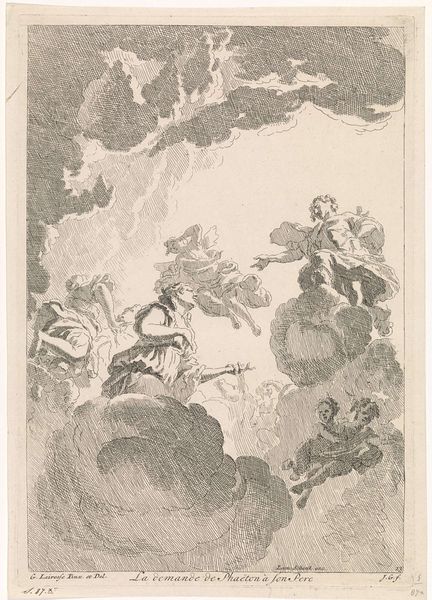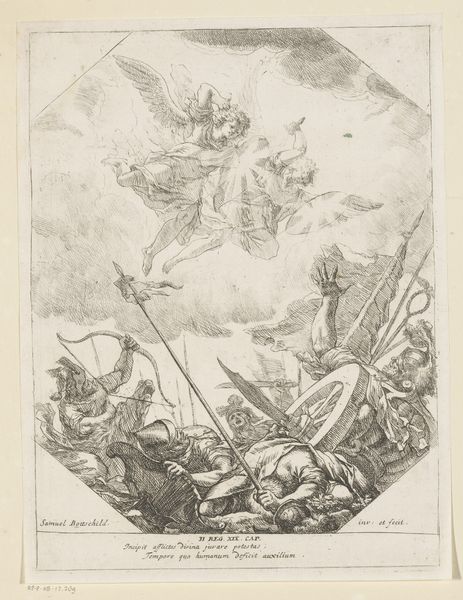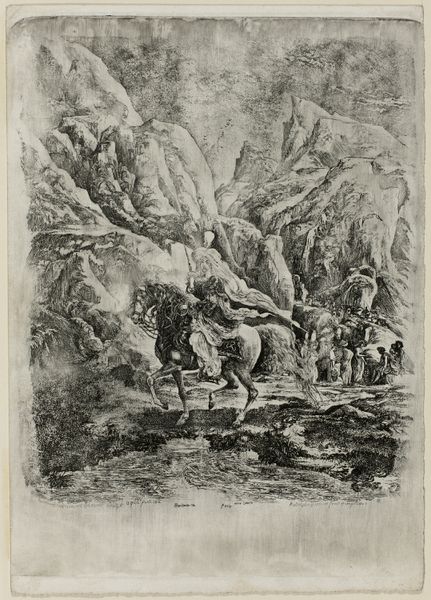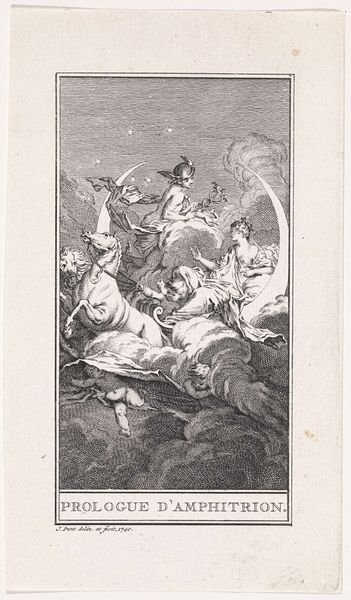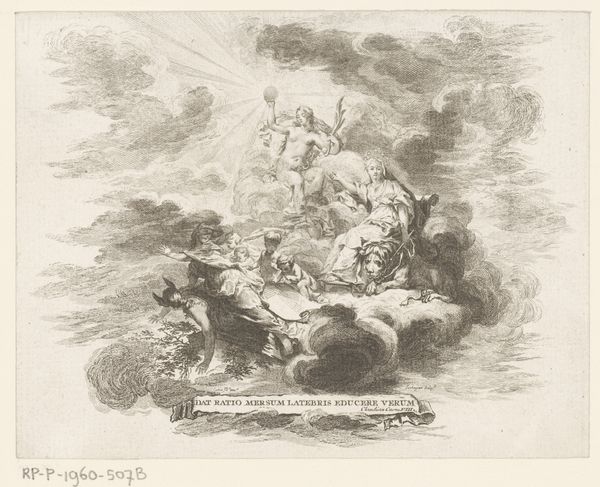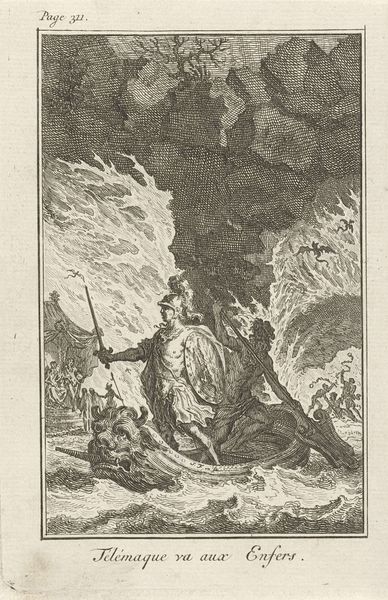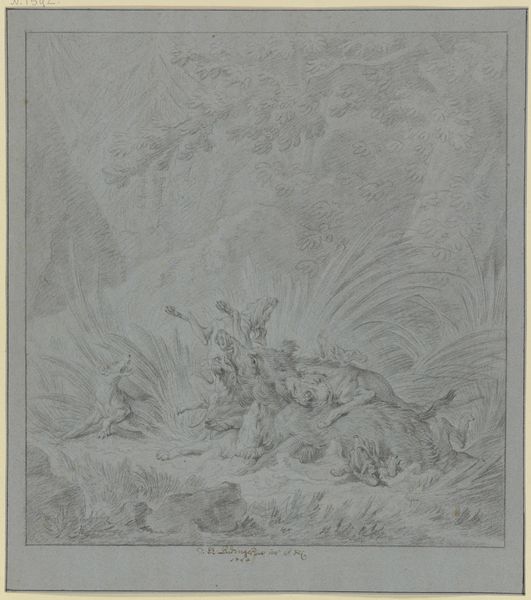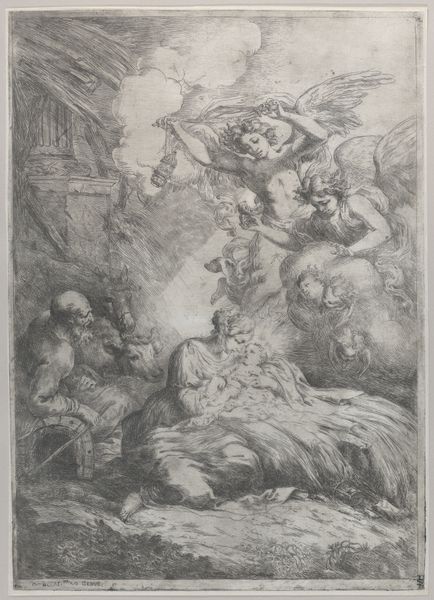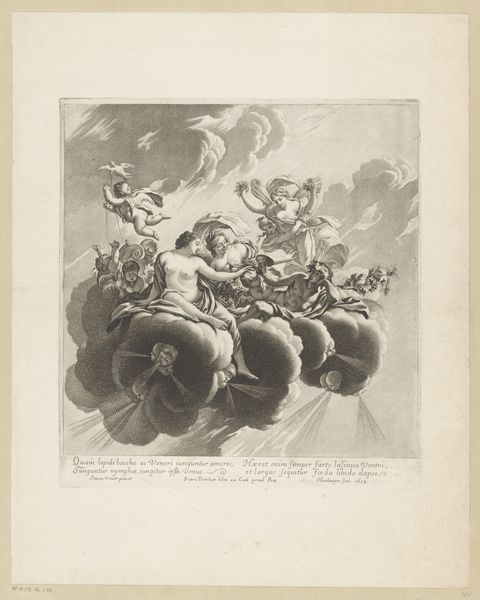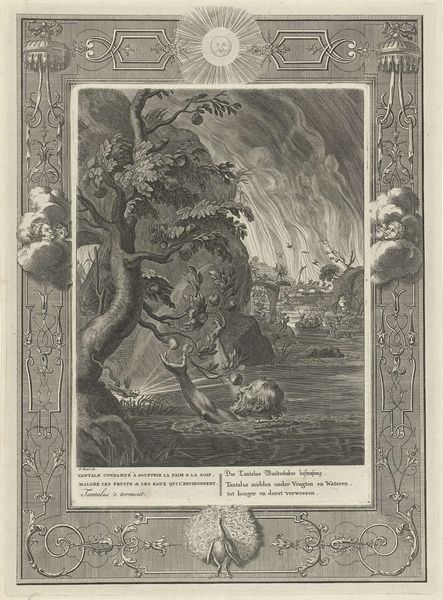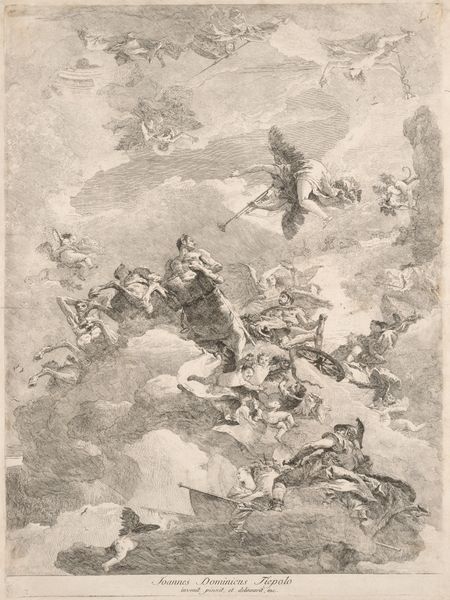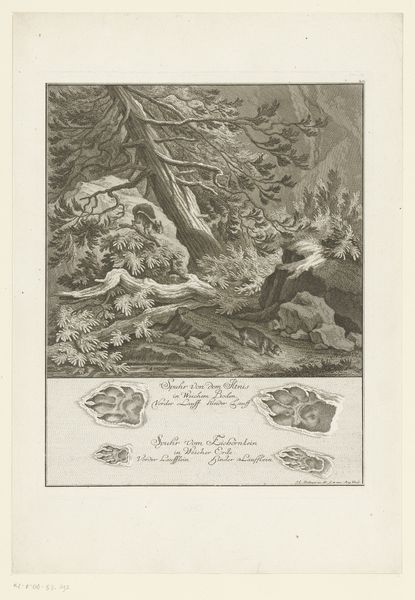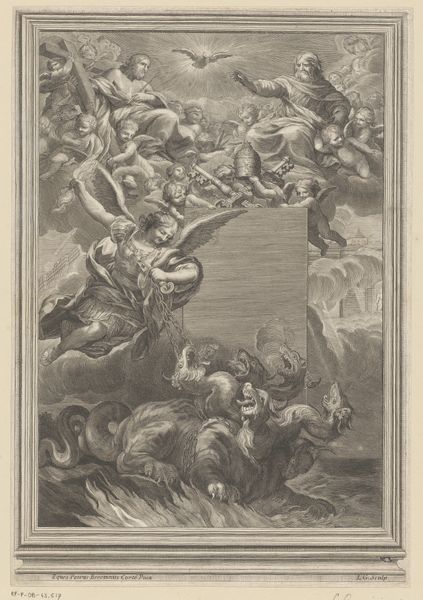
Een schip slaat tijdens een storm te pletter op de rotsen, plaat nr. 14, ca. 1700 1690 - 1710
0:00
0:00
engraving
#
baroque
#
landscape
#
history-painting
#
engraving
Dimensions: height 163 mm, width 191 mm
Copyright: Rijks Museum: Open Domain
Curator: Today we are looking at a dramatic engraving, "Een schip slaat tijdens een storm te pletter op de rotsen," or "A ship crashes on the rocks during a storm," dating from around 1690-1710, attributed to Sieuwert van der Meulen. It’s a rather potent image, isn’t it? Editor: Absolutely. There’s a kind of frenzied energy, a wildness, communicated through those scratchy lines. The whole thing feels tilted, unbalanced. Like being caught in the storm yourself. Curator: It’s interesting that you say that because engravings like this often served a very specific purpose beyond simple aesthetics. The mass production of prints meant scenes of maritime disaster like this could be disseminated widely. It allows us to examine the growth and development of media at the time. Editor: You're right, I mean, aside from pure spectacle, they have to mean something about power, control… or lack thereof, in the face of nature’s forces, and then there's also something that comes from making a shipwreck so graphic. Curator: Indeed. These images spoke to a burgeoning print culture that mediated events for wider audiences. Van der Meulen is utilizing etching to showcase almost what it would be like on location during this shipwreck event, highlighting the consumption of news that might be considered normal now, but was emerging during the baroque era. Editor: And thinking about van der Meulen himself, what was his relationship with maritime themes? Do we know if this image stems from some direct experience, or is he participating in, expanding this cultural fascination you are mentioning? Curator: Sieuwert specialized in history painting, landscape, and scenes like this of shipwrecks. This engraving highlights those popular thematics during that time, where shipwrecks were both common, devastating events that reshaped public thinking around trading. We have it on display at the Rijksmuseum to understand what shaped Dutch thinking at the time. Editor: Looking closely, I am starting to pick up more details beyond the dramatic foreground—tiny figures clinging to wreckage, maybe? A real story of human struggle is coming across, so I see what you mean when talking about baroque landscape. The whole thing makes me reflect how we all are, sometimes, just tiny figures fighting immense, unreadable storms of our own. Curator: A perfect summary of how the materiality and production methods reflect their intended role in popular culture! Editor: Thanks! I'll be using that thought today.
Comments
No comments
Be the first to comment and join the conversation on the ultimate creative platform.
